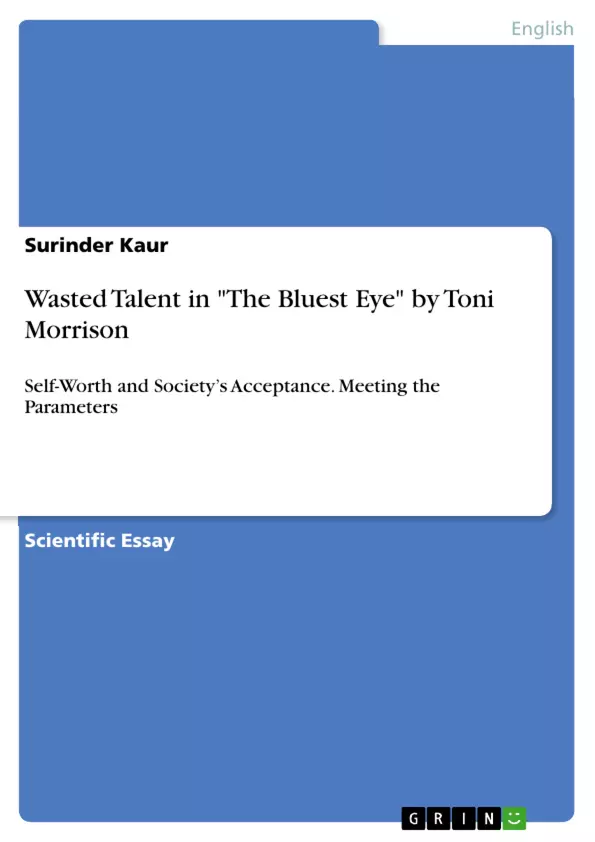The Bluest Eye is simple yet a difficult narrative of a twelve year old black girl Pecola’s desire to have blue eyes. The question arises why does a black girl want blue eyes? Why does she want to look differently? What causes this desire in her? As the story unfolds we get answers to these questions and also a realization that how the simple things like cup images or candy wrappers can be a strong factor in influencing an individual’s psychological response to beauty and his/her own self importance.
The present paper while building on existing criticism tries to explore the popular culture, for instance children items (cups, dolls, candies) and movies and its individual psychological response. These commercial products play a pivotal role in establishing beauty aesthetics. Regular exposure to these ideals results in their idealization and a longing in people to have these defining physical features of beauty. It creates an environment of superiority and inferiority. People who possess the defining features (physical) are considered superior to those who don’t have these physical features. This adversely affects their psyche and becomes a reason for their downfall.
Table of Contents
- Abstract
- From Critics' Pen.....
- The Beauty Cage: The Bluest Eye.
- Dick and Jane Narrative: How Life is Presented to the Black Children ........
- Shirley Temple Cup and Toy Dolls: Icons of Perfect Beauty
- Mary Jane Candies: Beauty as a Measure of Visibility
- Silver Screen Scale of Absolute Beauty
- Conclusion
- References....
Objectives and Key Themes
This paper explores the theme of beauty standards and their impact on African American individuals, specifically focusing on the psychological effects of popular culture's portrayal of beauty. The author analyzes how these external influences shape self-perception and contribute to feelings of self-worth and inferiority.
- The influence of popular culture on beauty standards
- The impact of these standards on self-worth and self-perception
- The role of race and racism in shaping beauty ideals
- The negative psychological effects of internalizing these standards
- The importance of challenging and redefining beauty standards
Chapter Summaries
- Abstract: The paper examines how popular culture, through products like toys, candy, and movies, influences the perception of beauty and self-worth, particularly for African American individuals.
- Introduction: The essay begins by introducing the novel "The Bluest Eye" by Toni Morrison and its exploration of the societal pressures faced by African Americans, especially the protagonist Pecola. It highlights the novel's portrayal of the impact of white supremacy and the influence of popular culture on self-perception.
- From Critics' Pen: This section discusses various critical perspectives on "The Bluest Eye," including interpretations of its themes, narrative structure, and impact on literary discourse.
- The Beauty Cage: The Bluest Eye: This section delves into the novel's depiction of beauty standards and their negative consequences for African American women. It explores how society's definition of beauty, often dictated by white standards, leads to feelings of inferiority and self-hatred.
- Dick and Jane Narrative: How Life is Presented to the Black Children: This section analyzes the use of the "Dick and Jane" children's primer within the novel. It explores how this seemingly innocuous educational tool reinforces white societal norms and presents a distorted reality for African American children.
Keywords
The primary keywords and focus topics of the text are: beauty, race, self-worth, racism, popular culture, white, black, and psychology. The paper examines the complex intersection of these themes, highlighting the impact of societal influences on individuals' perceptions and experiences.
- Citar trabajo
- Surinder Kaur (Autor), 2015, Wasted Talent in "The Bluest Eye" by Toni Morrison, Múnich, GRIN Verlag, https://www.grin.com/document/310958



